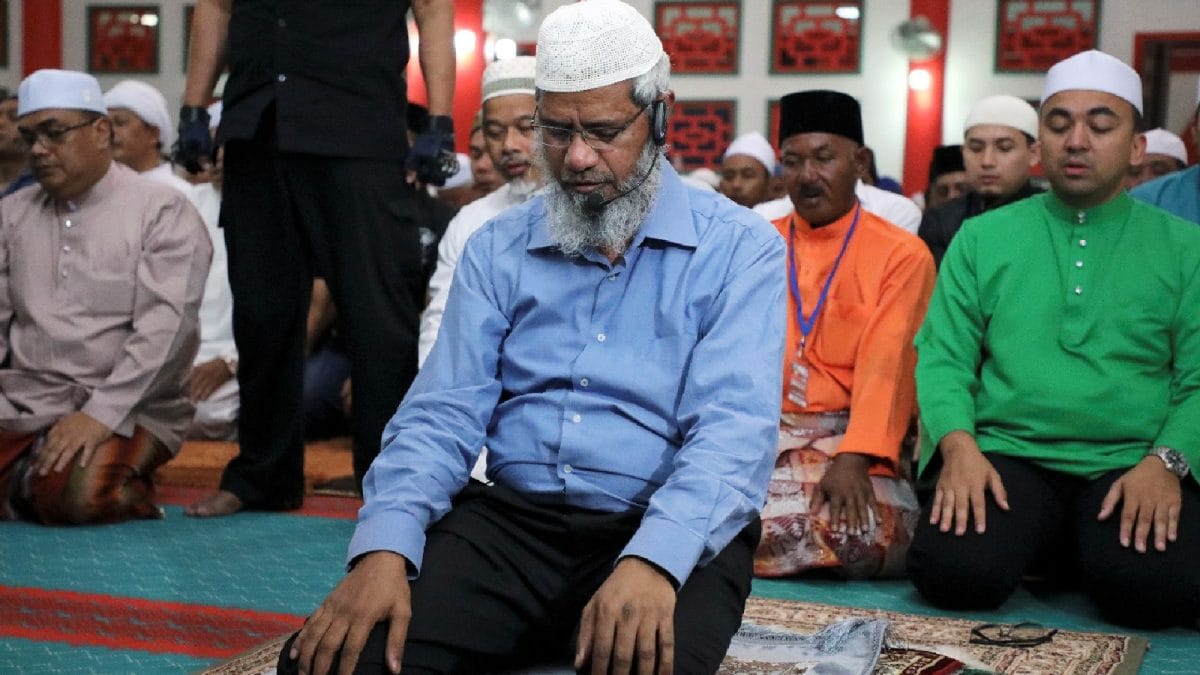ARTICLE AD BOX
Last Updated:November 05, 2025, 11:02 IST
The ballroom project has reignited a long-standing tension in Washington: how far should modernisation go when dealing with historic landmarks?

US President Donald Trump holds an image of a rendering of the new White House ballroom to be built. (Reuters Photo)
When Donald Trump talks about construction, the world listens. For decades, skyscrapers and golf resorts were his calling card — symbols of ambition wrapped in steel, glass, and gold. But now, Trump is pushing a new kind of building agenda, one rooted not in private real estate but in public heritage.
At the centre of it is what is being widely called Trump’s ‘White Construction Project’ — a sweeping plan that combines a massive renovation of the White House with a broader push to reshape how the US government buildings look and feel.
Let us understand what Trump’s idea is and the controversy.
The Ballroom That Started It All
The phrase “White Construction Project" first caught global attention when Trump unveiled plans for an expansive new ballroom at the White House, part of a larger renovation of the East Wing.
The design calls for the demolition of part of the historic wing — the first major exterior alteration to the building in more than eight decades — to make way for a 90,000-square-foot addition that can host nearly a thousand guests. The project, Trump has said, is meant to modernise the executive residence and restore a sense of “grandeur" to official state events.
The ballroom itself is being built with a mixture of private donations and personal funding, not taxpayer money. The total cost has ballooned from initial estimates of about $200 million to around $300 million, as the scope of the work expanded to include adjoining upgrades, infrastructure reinforcements, and aesthetic improvements to the East Colonnade.
Critics see it differently. They argue that the renovation is less about function and more about legacy — a symbolic act that aligns with Trump’s taste for lavish, visually imposing architecture. Preservationists warn that the demolition erases a key piece of American history, while Trump supporters say it is a long-overdue modernisation of an aging national icon.
Why Is It Called The ‘White Construction Project’?
The name ‘White Construction Project’ reflects both the White House renovation itself and Trump’s wider architectural vision.
Over the years, Trump has spoken repeatedly about his preference for classical, white-stone architecture such as columns, symmetry, and grandeur reminiscent of early American federal buildings. During his earlier presidential term, he signed an executive order promoting classical design as the preferred aesthetic for federal buildings, describing it as a way to “restore dignity and beauty" to government spaces.
That same philosophy appears to be guiding his current construction agenda. The White House ballroom’s proposed design features white marble facades, domed ceilings, and neoclassical detailing — elements meant to match his larger vision of traditional American architecture.
But there is a political subtext. For Trump, building or rebuilding is not just about infrastructure. It is about identity and permanence. His “white construction" push, both literally and metaphorically, is an attempt to stamp his mark on the most symbolic building in the US.
What Are Trump’s Government-Linked Projects?
While the White House ballroom has become the centrepiece, it is part of a broader pattern of Trump engaging with government-linked real estate projects, which sit at the intersection of public property and private influence.
Here’s what that landscape looks like:
- The Old Post Office Transformation
Before his return to the presidency, Trump famously leased the 19th-century Old Post Office building in Washington, DC, from the US government. The Trump Organization converted it into a luxury hotel, restoring the property while maintaining its historic exterior.
That deal marked one of the rare occasions when a private developer had control over a federal landmark, and it foreshadowed Trump’s approach to the current White House project — combining historic prestige, architectural ambition, and personal branding.
- The Border Wall Legacy
As president, Trump oversaw the construction of over 450 miles of border barriers — one of the largest federally managed construction projects in recent US history.
Though unrelated in design to the “white construction" theme, it reinforced his identity as a “builder president" — a leader who equates physical construction with national strength.
- The ‘Classical America’ Architecture Push
Trump’s architectural directives extended beyond the White House. He advocated for a national design philosophy based on classical architecture for federal buildings — favouring marble columns, domes, and white limestone facades over minimalist modernism.
That vision is now being reasserted through new federal construction plans, including courthouse designs and cultural centres that mirror the same aesthetic ideals.
What’s The Politics Behind The Project?
Trump’s construction agenda is not just about aesthetics — it is deeply political. To his supporters, the “white construction project" is about revival: restoring American craftsmanship, traditional beauty, and patriotic symbolism to federal architecture. They see it as a tangible expression of Trump’s “America First" ideology — a physical manifestation of national pride.
To his critics, it is about control and image. They argue that Trump’s construction push blurs the line between public service and personal ambition, using government property as a canvas for political branding. The ballroom’s grandeur reportedly mirrors Trump Tower more than it does the restrained elegance of past presidential renovations.
The debate has also raised questions about transparency. With private donations funding parts of the project, watchdog groups have demanded clarity on who the donors are and what influence they might have in return. Federal oversight of the renovation remains limited, since it falls under the purview of the Executive Office rather than a dedicated public works agency.
The Preservationists vs Pragmatists Debate
The ballroom project has reignited a long-standing tension in Washington: how far should modernisation go when dealing with historic landmarks?
Preservationists argue that the White House, as both a museum and a working residence, should be changed only with extreme caution. They point out that no president since Franklin D. Roosevelt has undertaken an exterior expansion of this magnitude. Others counter that the building’s infrastructure — plumbing, wiring, and security systems — desperately needs modernisation, and that adding a ballroom could relieve overcrowding during state events and official functions.
The divide mirrors a larger global debate: How to preserve heritage in an age of spectacle and branding. The “white construction project" has effectively become a test case for balancing history with modernisation, and tradition with political ego.
A Matter Of Legacy
For Trump, architecture has always been personal. Buildings are not just structures; they are statements. His towers in New York, Chicago, and Las Vegas were designed as symbols of dominance and prestige. His golf resorts and hotels carry the same DNA — big, bold, and unmistakably branded.
The ballroom at the White House, while technically a public facility, is clearly a legacy project. It is designed to outlast his presidency, his politics, and even his party. Just as Franklin Roosevelt left behind the West Wing expansion and Barack Obama oversaw subtle modernisation, Trump wants his mark to be visible — literally and physically — in America’s most iconic building.
In this sense, the “white construction project" is less about new architecture and more about architecting memory.
Are Taxpayers’ Funds Involved?
Even as Trump insists the project will not rely on taxpayer money, financing remains one of the most contentious aspects.
Private donors, reportedly including major corporations and wealthy individuals, have pledged contributions towards the construction. Critics argue that such donations create potential conflicts of interest, particularly if those donors have business before the federal government.
The White House has maintained that the project is compliant with ethics regulations and that all donations are vetted. Still, without full disclosure of contributors and contracts, suspicions persist.
Cost overruns are another concern. The original projection of $200 million quickly jumped to $300 million, and construction experts suggest the final price tag could go higher as materials, security systems, and architectural detailing evolve.
How Is The World Reacting?
The scale and symbolism of the “white construction project" have drawn international attention. Around the world, governments have grappled with similar dilemmas — how to modernise seat-of-power buildings without erasing their history.
Observers have compared Trump’s approach to the redevelopment of India’s Central Vista in New Delhi — a project that also balanced modernisation, national symbolism, and political controversy. Both involve historic architecture, massive budgets, and heated debates over necessity versus legacy.
What Happens Next
The White House ballroom is scheduled for completion towards the end of Trump’s current term in 2029. If timelines hold, it will become the largest single addition to the building since World War II.
Once complete, it is expected to host major state dinners, diplomatic events, and presidential galas, possibly even public functions that underscore its dual role as both government asset and cultural showcase.
Still, controversy is not likely to fade. Oversight committees, ethics watchdogs, and preservation groups continue to monitor the project closely, pressing for transparency on costs, contractors, and long-term maintenance.
The question now is whether the ballroom will be remembered as a feat of vision or as an excess of ego.
Why The Project Matters
The “white construction project" may seem like a US-only story, but it carries lessons far beyond Washington. It reflects a growing global trend where politics, architecture, and image converge.
For modern leaders, buildings are not just offices — they are statements of power and permanence. From the Central Vista in India to the Great Hall refurbishments in Europe, and now to Trump’s White House expansion, architecture has become a new form of political communication.
In Trump’s case, the message is unmistakable: to build is to lead, and to rebuild is to reignite.
What To Conclude?
Trump’s “white construction project" is about much more than a ballroom. It is a fusion of politics, design, and legacy — an effort to reshape not only the look of the White House but the meaning of presidential architecture itself.
Whether history remembers it as visionary or vain will depend on what follows — the transparency of the process, the purpose of the space, and the perception of power it leaves behind.
For now, what is clear is this: Trump has returned to his roots — not as a politician, but as a builder. Only this time, the property under renovation is not another Trump Tower. It is the US government itself.
Shilpy Bisht, Deputy News Editor at News18, writes and edits national, world and business stories. She started off as a print journalist, and then transitioned to online, in her 12 years of experience. Her prev...Read More
Shilpy Bisht, Deputy News Editor at News18, writes and edits national, world and business stories. She started off as a print journalist, and then transitioned to online, in her 12 years of experience. Her prev...
Read More
First Published:
November 05, 2025, 11:02 IST
News explainers What Is Trump’s ‘White Construction Project’? The Plan Changing The White House Forever
Disclaimer: Comments reflect users’ views, not News18’s. Please keep discussions respectful and constructive. Abusive, defamatory, or illegal comments will be removed. News18 may disable any comment at its discretion. By posting, you agree to our Terms of Use and Privacy Policy.
Stay Ahead, Read Faster
Scan the QR code to download the News18 app and enjoy a seamless news experience anytime, anywhere.


 2 hours ago
7
2 hours ago
7









 English (US) ·
English (US) ·